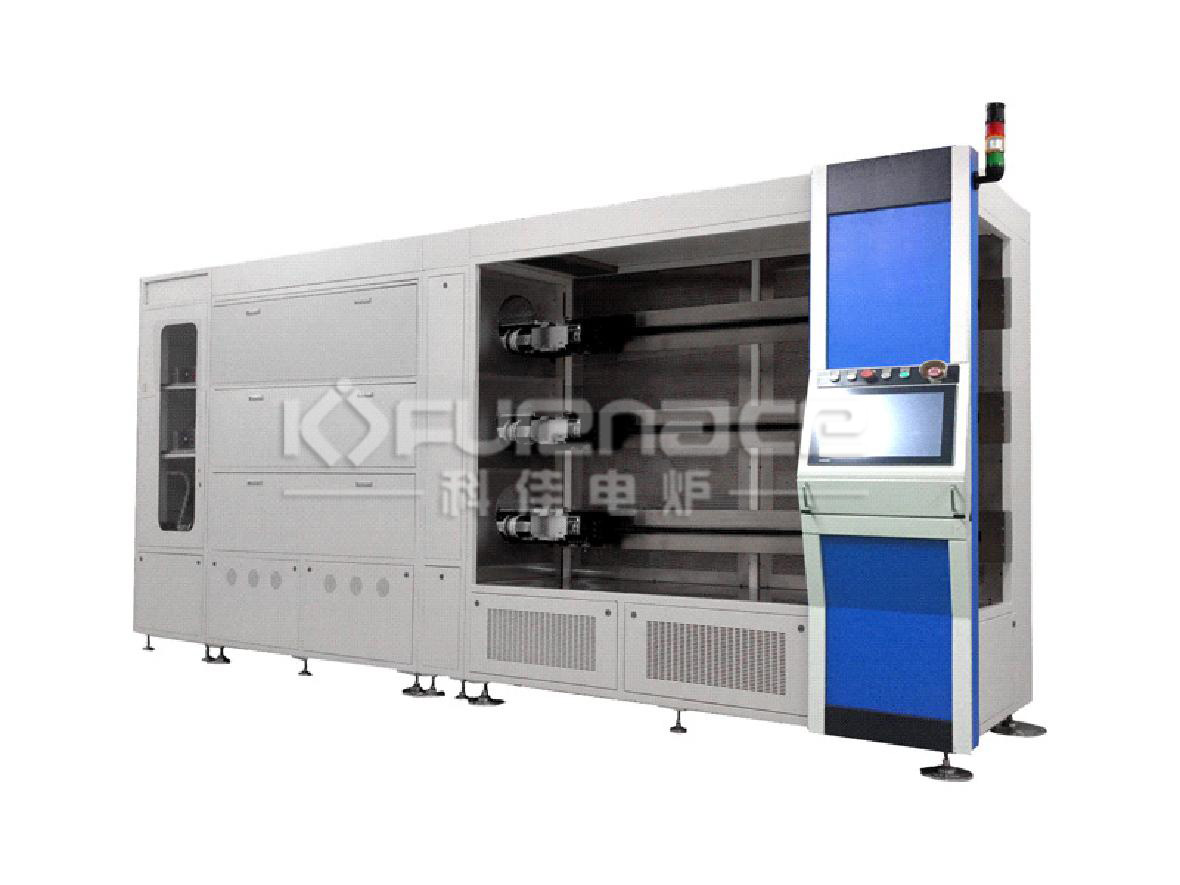The role of horizontal & vertical oxidation diffusion furnaces in the semiconductor industry
Semiconductor Oxidation Diffusion Furnace is a commonly used equipment in the semiconductor industry for oxidation or diffusion treatment on the surface of semiconductor wafers. In the semiconductor manufacturing process, oxidation diffusion is an important process step used to control the thickness of the oxide layer on the surface of the semiconductor material or the diffusion depth of impurities in the semiconductor. Oxidation diffusion furnaces usually use high-temperature furnace bodies to achieve the oxidation or diffusion process by controlling temperature and atmosphere. In the oxidation diffusion process, oxidation diffusion furnaces can be divided into two types: vertical furnaces and horizontal furnaces, which are slightly different in structure and working principle.
1.Vertical Furnace: A vertical furnace is a vertically arranged furnace, and its furnace tubes are usually set vertically. In a vertical furnace, the semiconductor wafer is held inside the furnace tube by one or more clamps and moves up or down the furnace tube. Vertical furnaces typically have a smaller footprint and are suitable for low-volume production.
2. Horizontal Furnace: A horizontal furnace is a horizontally arranged furnace with its furnace tubes set horizontally. In a horizontal furnace, semiconductor wafers are continuously transported from one port in the furnace to another through a conveyor-type device. Horizontal furnaces usually have larger production capacities and are suitable for large-scale production.

Both horizontal furnaces and vertical furnaces have their own advantages in the oxidation diffusion process. The selection of appropriate equipment depends on factors such as production scale, process requirements, and production efficiency. Silicon wafers below 6 inches use horizontal oxidation furnaces, and silicon wafers above 8 inches use vertical oxidation furnaces. The oxidation furnace tube and the wafer boat for loading wafers are both made of quartz material. During the oxidation process, impurity pollution and metal pollution must be prevented. In order to reduce human factors, most modern IC manufacturing uses automated control.
In the oxidation diffusion process, horizontal furnaces and vertical furnaces have their own application scenarios and advantages.
Application of horizontal furnace in oxidation process:
1. Oxide layer preparation: Horizontal furnaces can be used to prepare oxide layers on the surface of semiconductor wafers. By controlling the atmosphere and temperature in the furnace, precise control of the thickness and properties of the oxide layer can be achieved.
2. Doping Diffusion: Horizontal furnaces can also be used for doping diffusion processes, which introduce specific impurities into semiconductor wafers. By controlling the diffusion temperature and time, the diffusion depth and concentration distribution of impurities can be precisely controlled.
Application of vertical furnace in oxidation process:
1. Low-volume production: Vertical furnaces typically have a smaller footprint and are suitable for low-volume production and R&D work.
2. Special Materials Processing: Vertical furnaces can also be used to process special materials, such as substrates other than silicon.
Generally speaking, horizontal furnaces are suitable for large-scale production and processes that require high oxide layer thickness and impurity diffusion depth, while vertical furnaces are suitable for small batch production and special material processing. Which furnace to choose depends on specific production needs and process requirements.


 E-mail:web@kejiafurnace.com
E-mail:web@kejiafurnace.com
 Tell:+(86) 18037178440
Tell:+(86) 18037178440
 Whatapp:+(86) 180-3717-8440
Whatapp:+(86) 180-3717-8440
 Address:Room 1505, Building 9, No. 26 Dongqing Street, Zhengzhou High-tech Industrial Development Zone
Address:Room 1505, Building 9, No. 26 Dongqing Street, Zhengzhou High-tech Industrial Development Zone
